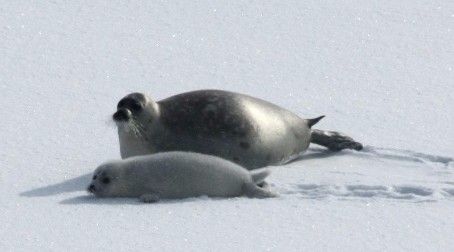Conservation of endangered Caspian seals

The challenge
The Caspian Sea in Central Asia is the world’s largest landlocked waterbody, and is critical for biodiversity in the region, supporting many endemic and migratory species, with its environment being vital to the economic activity and wellbeing of millions of people. The Caspian Sea faces many pressures stemming from the impacts of human activities and climate heating, creating conservation threats and driving population declines for many species.
A key challenge is to understand how the ecology of keystone species such as the endangered Caspian seal, influences vulnerability and exposure to different kind of threats, and how this can be used to inform conservation and environmental sustainability strategies.
The solution
Dr Simon Goodman and colleagues have studied key aspects of the ecology of Caspian seals, such as population abundance, habitat use, and breeding behaviour, and how these interact with human activities such fishing and industrial development. The work identified key threats to Caspian seals, such as drowning in illegal fishing nets associated with sturgeon poaching, and showed the population declined drastically during the 20th century.
The work also provides information on how to prioritise and design conservation measures for Caspian seals. Satellite tracking studies have helped to identify migration routes and key foraging areas of Caspian seals that are priorities for protection. Research on the breeding behaviour of the species, which gives birth to pups on an ice sheet that forms in the northern Caspian each winter, demonstrated that breeding females and their pups are vulnerable to disturbance from icebreaking vessels that traverse through the breeding areas to service offshore oil installations.
The impact
The work of Dr Goodman and colleagues, was used by the International Union for the Conservation of Nature (IUCN) to support the listing of Caspian seals as Endangered, and by countries bordering the Caspian Sea, to add the species to their national Red Books. The species is now also recognised by the United Nations Convention on Migratory Species (CMS), which obligates signatory countries to establish conservation measures for migratory species in their territory.
Together these have stimulated significant interest towards supporting Caspian seal conservation. Dr Goodman and colleagues have developed a series of recommendations to reduce disturbance from icebreakers to breeding seals, and has worked as a consultant to several major oil companies that operate in the area, advising them how to reduce the potential impacts from their operations on the seal populations and habitat. Furthermore, Dr Goodman’s research has underpinned an important policy step leading towards the identification of internationally recognised marine protected area candidates for Caspian seals.
During the course of their work, the team has also provided training and capacity building support to regional researchers and local seal conservation initiatives. Undertaking measures to conserve Caspian seals will help protect many other species and key habitats in the Caspian, which will ultimately help improve the economic sustainability and wellbeing for people in the region.

